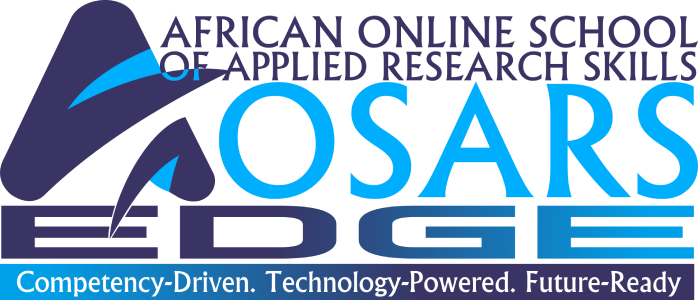MASTERS STUDENTS EMPOWERED ON MS WORD CUSTOMIZATION SKILLS FOR THESIS WRITING

MASTERS STUDENTS EMPOWERED ON MS WORD CUSTOMIZATION SKILLS FOR THESIS WRITING
The African Online School of Applied Research Skills (AOSARS) conducted an in-depth training session on April 24, 2025, designed to empower Master’s students with the technical expertise required to produce polished, academically rigorous theses using Microsoft Word. The session focused on customizing Word’s functionality to enhance efficiency, ensure consistency, and align with university formatting standards, enabling students to manage complex, lengthy documents with minimal manual intervention.
The training began with foundational document management strategies. Students were encouraged to adopt date-based naming conventions for saving drafts, facilitating version control and preventing the loss of critical revisions. To further safeguard work, the session covered configuring Word’s auto-recovery feature to save documents every minute, mitigating risks from power outages or system crashes.
A core component of the training was customizing Word’s interface to prioritize tools essential for thesis writing. Students learned to modify tabs and ribbons, adding specialized tabs such as “Equations” for those handling mathematical expressions, “Headers and Footers” for page formatting, and a custom tab for personalized tools. Superfluous tabs, like “Mailings,” were removed, and the remaining tabs were reorganized to ensure quick access to high-priority functions, streamlining the writing process.
The session placed significant emphasis on configuring Word’s styles to automate formatting, a critical feature for maintaining uniformity across a thesis. The “Normal” style was adjusted to meet typical academic requirements, such as Times New Roman, 12-point font, and 1.5 line spacing. Heading styles were meticulously customized: Heading 1 for chapter titles (e.g., bold, 14-point, centered, with automatic page breaks), Heading 2 for subsections (e.g., 1.1, 1.2), and Heading 3 for sub-subsections (e.g., 1.1.1). These were integrated with a multilevel numbering system to dynamically update as sections are added, moved, or deleted. Settings like “Keep with Next” and “Keep Lines Together” were enabled to prevent formatting issues, such as headings being separated from their content across page breaks.
Automation extended to numbering and referencing tables, figures, and sections. The training demonstrated how to insert captions for tables and figures (e.g., Table 3.1) linked to chapter numbers, ensuring seamless updates when content changes. Cross-referencing was introduced to connect in-text references to specific tables or figures, reducing errors during revisions. Students also learned to generate lists of tables and figures automatically, simplifying the inclusion of supplementary materials.
Page numbering, often a complex aspect of thesis formatting, was thoroughly addressed. The session covered using Roman numerals for preliminary sections (e.g., table of contents, abstract) and Arabic numerals for the main body, while excluding the title page from numbering. Section breaks were utilized to transition between numbering formats and to adjust page orientations (e.g., from portrait to landscape) for data-intensive sections, ensuring flexibility in document layout.
The navigation pane was presented as an invaluable tool for managing extensive documents. Students were shown how to use it to visualize and rearrange sections via drag-and-drop, with numbering automatically adjusting to reflect changes. The training also included generating a table of contents using customized TOC styles, with options to modify font, style, or indentation to comply with institutional guidelines.
The session was highly interactive, with facilitators addressing student questions in real-time. Common challenges, such as difficulties adding the “Equations” tab or ensuring styles appeared as standalone tabs rather than nested groups, were resolved through clear, step-by-step instructions. For example, students were guided to select tabs correctly in the customization menu to avoid grouping errors.
The training concluded with a preview of future sessions, which will shift focus to the writing process itself, covering how to structure arguments, refine ideas, and ensure coherent flow in a thesis. By equipping students with these technical proficiencies, AOSARS seeks to alleviate the procedural burdens of thesis production, enabling scholars to concentrate on the intellectual depth of their research.





